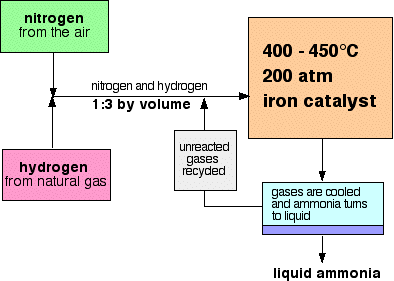Le Chatelier's principle
Key Questions
-
Le Chatelier's Principle is important, because it allows us to shift an equilibrium to the side that we would like to favor. For example the Haber Process produces ammonia reversibly.
#N_2(g) + 3 H_2(g) -> 2 NH_3(g)# ![http://www.chemguide.co.uk]
( )
)The reaction is run at high pressures, because there are 2 moles of ammonia on the product side, but 4 moles of gas on the reactant side (3 mol of hydrogen and 1 mol of nitrogen). Since 2 mol of gas occupies a smaller volume than 4, increasing the pressure will increase the amount of ammonia at equilibrium.
Interestingly, high temperatures favors the reactant side, but the reaction will reach equilibrium faster at higher temperatures, which is why the reaction is carried out at a moderately high temperature.
For more, see: What is Le Chatelier's principle?
-
- According to Le Chatelier's principle, a disturbance in a system will cause a shift to counter the effect of this disturbance
Changes in concentration of reactants or products will cause a shift to reestablish the equilibrium.
- If the concentration of a substance is increased, the reaction shifts to consume the excess substance.
Conversely, if the concentration of a substance is decreased the reaction produces more of that substance until equilibrium is reestablished.
- Let us use the classic Haber reaction as an example
Nitrogen and hydrogen gases are reacted to produce ammonia
#N_2# +#3H_2# ----> 2# NH_3# If the concentration of nitrogen or hydrogen gas is increased, will cause both reactants to be consumed and thus shift the reaction to favor the product which is an increased concentration of ammonia.
- Similarly, you can also raise the concentration of ammonia by removing ammonia from the reaction mixture and thus shifting toward the product side.
-
In chemistry, Le Chatelier's principle, also called Chatelier's principle or "The Equilibrium Law", can be used to predict the effect of a change in conditions on a chemical equilibrium.
The principle is named after Henry Louis Le Chatelier and sometimes Karl Ferdinand Braun who discovered it independently. It can be stated as:
If a chemical system at equilibrium experiences a change in concentration, temperature, volume, or pressure, then the equilibrium shifts to counteract the imposed change and a new equilibrium is established.